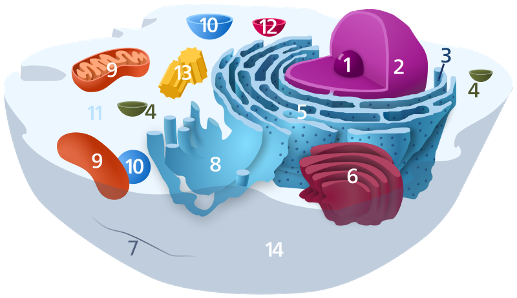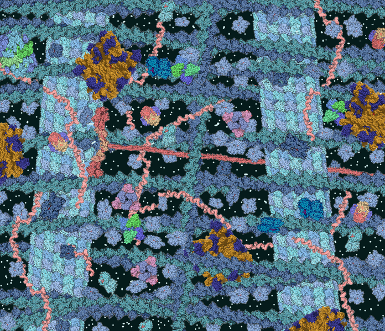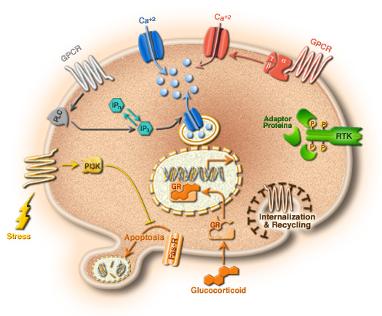Components of a typical animal cell:
1) Nucleolus 2) Nucleus 3) Ribosome (little dots) 4) Vesicle 5) Rough endoplasmic reticulum 6) Golgi apparatus (or "Golgi body") 7) Cytoskeleton 8) Smooth endoplasmic reticulum 9) Mitochondrion 10)Vacuole 11) Cytosol (fluid that contains organelles) 12) Lysosome 13) Centrosome 14) Cell membraneClick the graphics for full views
Cell biology (formerly cytology, from the Greek kytos, "contain")
is a scientific discipline that studies cells – their physiological properties,
their structure, the organelles they contain, interactions with their
environment, their life cycle, division and death. This is done both on a
microscopic and molecular level. Cell biology research encompasses both the
great diversity of single-celled organisms like bacteria and protozoa, as well
as the many specialized cells in multicellular organisms such as humans,
plants, and sponges. Knowing the components of cells and how cells work is
fundamental to all biological sciences. Appreciating the similarities and
differences between cell types is particularly important to the fields of cell
and molecular biology as well as to biomedical fields such as cancer research
and developmental biology. These fundamental similarities and differences
provide a unifying theme, sometimes allowing the principles learned from
studying one cell type to be extrapolated and generalized to other cell types.
Therefore, research in cell biology is closely related to genetics,
biochemistry, molecular biology, immunology, and developmental biology... Continue in the Guidebook below where full descriptions of the introductory graphics are explained in their details.


